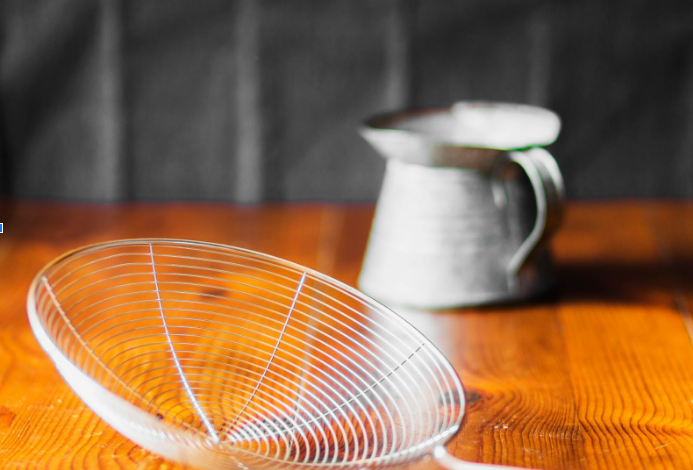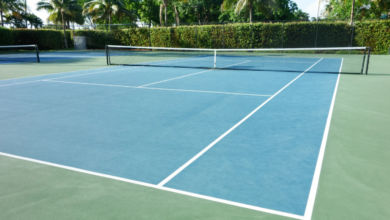How do I choose the right stainless steel sieve for my needs?

Understanding Stainless Steel Sieves and Their Importance
stainless steel mesh sieve represent one of the most fundamental tools in both professional kitchens and home cooking environments. These versatile instruments serve multiple purposes, from straining liquids and separating solids to sifting flour and removing lumps from dry ingredients. The choice of the right stainless steel sieve can significantly impact the efficiency of your cooking processes and the quality of your final results.
The fundamental principle behind a sieve’s operation is simple yet effective. The perforated or mesh surface allows smaller particles to pass through while retaining larger ones, creating a separation based on size. This seemingly basic function becomes incredibly sophisticated when you consider the various applications and the precision required for different culinary tasks.
Stainless steel has become the preferred material for sieves due to its exceptional properties. Unlike other materials, stainless steel offers superior corrosion resistance, making it ideal for contact with acidic foods and frequent washing. The non-reactive nature of stainless steel ensures that it won’t impart any metallic taste to your food or react with ingredients, maintaining the integrity of flavors in your dishes.
The durability of stainless steel sieves makes them a long-term investment for any kitchen. Unlike plastic alternatives that may crack or warp over time, or aluminum versions that can corrode, stainless steel sieves maintain their structural integrity through years of heavy use. This durability extends beyond just the material itself to include the mesh construction, which remains taut and effective even after countless uses.
Key Factors to Consider When Choosing a Stainless Steel Sieve
When selecting the perfect stainless steel sieve for your specific needs, several critical factors demand careful consideration. The intended use represents the most fundamental aspect of your decision-making process. Different culinary tasks require different sieve characteristics, and understanding these requirements will guide you toward the most suitable option.
The frequency of use plays a crucial role in determining the level of quality and durability you should prioritize. Professional kitchens that rely on sieves for daily operations require heavy-duty construction that can withstand constant use and repeated washing. Home cooks who use sieves occasionally might prioritize different features, such as easy storage or specific mesh sizes for their favorite recipes.
Your cooking style and preferred cuisine types also influence the ideal sieve selection. Bakers who frequently work with flour and powdered ingredients need fine-mesh sieves that can effectively remove lumps and create smooth, uniform textures. Those who focus on sauce-making require sieves with different characteristics, possibly including multiple mesh sizes for various consistency requirements.
The available storage space in your kitchen affects both the size and quantity of sieves you can practically accommodate. Some cooks prefer having multiple specialized sieves for different tasks, while others need versatile options that can handle various applications without requiring extensive storage space.
Budget considerations, while important, should be balanced against the long-term value proposition. Higher-quality stainless steel sieves typically offer better durability and performance, potentially providing better value over time despite higher initial costs. However, the specific features you prioritize will determine whether premium options are necessary for your particular applications.
Mesh Sizes and Their Applications
The mesh size of a stainless steel sieve represents one of the most critical specifications that determines its suitable applications. Mesh count, typically measured as the number of holes per linear inch, directly correlates with the fineness of filtration the sieve can achieve. Understanding these measurements and their practical implications helps ensure you select sieves that meet your specific requirements.
Fine mesh sieves, typically ranging from 100 to 200 mesh count, excel at creating smooth textures and removing even the smallest lumps from ingredients. These sieves prove invaluable for sifting flour, cocoa powder, and confectioner’s sugar, ensuring these dry ingredients achieve the light, airy consistency essential for successful baking. The fine mesh also makes these sieves excellent for straining custards, sauces, and soups, removing any unwanted particles that might affect the final texture.
Medium mesh sieves, usually falling between 40 and 80 mesh count, offer versatility for a wide range of kitchen tasks. These sieves effectively strain pasta water, drain canned goods, and separate coarser particles from liquids. They work well for most general kitchen straining tasks while still providing sufficient fineness for many cooking applications. The medium mesh strikes a balance between filtration capability and ease of cleaning, making it a popular choice for everyday use.
Coarse mesh sieves, typically below 40 mesh count, specialize in tasks requiring rapid drainage and separation of larger particles. These sieves excel at draining pasta, washing vegetables, and straining broths where fine filtration isn’t necessary. The larger openings allow for faster liquid flow, making them efficient for tasks involving large volumes of liquid.
The relationship between mesh size and flow rate becomes particularly important when considering the time efficiency of your kitchen tasks. Finer meshes provide more thorough filtration but require more time for liquids to pass through. This trade-off between filtration quality and speed influences the choice based on your specific priorities and time constraints.
Construction Quality and Material Grade
The construction quality of a stainless steel sieve extends far beyond the basic material composition, encompassing the manufacturing techniques, welding quality, and overall design integrity. Premium sieves feature seamless construction where the mesh is securely attached to the rim without creating potential failure points that could compromise the tool’s longevity.
The grade of stainless steel used in construction significantly impacts both performance and durability. Food-grade stainless steel, typically 304 or 316 grade, ensures safety for food contact while providing excellent corrosion resistance. These grades contain specific alloy compositions that prevent rust formation and maintain their appearance even after extensive use and cleaning.
Welding quality becomes particularly evident in the connection points between the mesh and the rim. High-quality sieves feature smooth, consistent welds that create strong bonds without sharp edges or rough surfaces that could harbor bacteria or cause injury during use. Poor welding can lead to mesh separation over time, rendering the sieve unusable and potentially dangerous.
The rim construction affects both durability and functionality. Rolled rims provide strength and safety by eliminating sharp edges while creating a comfortable grip surface. The rim thickness influences the overall structural integrity, with heavier gauge materials providing better resistance to deformation under pressure or impact.
Mesh attachment methods vary between manufacturers, with the best options featuring secure mechanical or welded connections that prevent the mesh from loosening or separating during use. Some lower-quality sieves rely on adhesives or simple crimping that may fail over time, particularly when subjected to high temperatures or aggressive cleaning.
See also: How Collaborative Hiring Reshapes Company Success
Size and Capacity Considerations
Selecting the appropriate size for your stainless steel sieve involves balancing your typical batch sizes with available storage space and handling comfort. The diameter of the sieve directly affects its capacity and the efficiency with which you can complete various tasks. Understanding your specific needs helps determine the optimal size range for your applications.
Small sieves, typically ranging from 3 to 6 inches in diameter, excel at precise tasks such as dusting desserts with powdered sugar, straining small quantities of sauces, or sifting spices. These compact tools offer excellent control and precision but may prove inefficient for large-batch cooking. Their small size makes them ideal for garnishing and final presentation touches where precise application is more important than volume capacity.
Medium-sized sieves, generally between 6 and 10 inches in diameter, represent the most versatile option for most home cooks. These sieves can handle typical family-sized portions while remaining manageable for single-handed operation. They strike an effective balance between capacity and control, making them suitable for most common kitchen tasks from straining pasta to sifting baking ingredients.
Large sieves, exceeding 10 inches in diameter, become essential for high-volume cooking or professional applications. These sieves can process large batches efficiently but require adequate storage space and may demand two-handed operation due to their size and weight when filled. The increased surface area allows for faster processing of large quantities but may be cumbersome for smaller tasks.
The depth of the sieve bowl affects its practical capacity and splash control. Deeper bowls can hold more ingredients and provide better containment during vigorous shaking or stirring. However, deeper designs may make it more difficult to access and scrape ingredients from the bottom of the mesh, potentially affecting efficiency for certain applications.
Handle and Rim Design Features
The handle design of a stainless steel sieve significantly impacts user comfort, safety, and overall functionality during extended use. Quality handles provide secure grip, heat resistance, and ergonomic comfort that reduces hand fatigue during prolonged operations. The attachment method and material choices in handle construction affect both durability and user experience.
Traditional wire handles offer simplicity and durability while taking up minimal storage space. These handles typically attach at two points on opposite sides of the rim, creating a stable platform for one-handed operation. The wire gauge affects both strength and comfort, with heavier gauge wire providing better durability but potentially creating pressure points during extended use.
Ergonomic handles, often featuring rubber or silicone grips, enhance comfort during extended use while providing better control in wet conditions. These handles typically cost more but offer significant advantages for frequent users or those with grip strength limitations. The non-slip surfaces improve safety and reduce the risk of accidents during use.
Some sieves feature removable or foldable handles that facilitate compact storage while maintaining full functionality during use. These designs prove particularly valuable in kitchens with limited storage space, though they may introduce additional complexity and potential failure points compared to fixed handle designs.
The rim design interacts closely with handle placement to affect overall usability. Wide, rolled rims distribute weight more evenly and provide additional surface area for resting the sieve on bowls or pots during use. This stability becomes particularly important when working with large quantities or when precision is required.
Specialized Sieve Types for Different Applications
Beyond standard mesh sieves, several specialized designs cater to specific culinary applications, each optimized for particular tasks or ingredients. Understanding these specialized options helps identify whether standard sieves meet your needs or if specialized tools would provide significant advantages for your cooking style.
Chinois sieves, characterized by their conical shape and extremely fine mesh, excel at creating perfectly smooth sauces and soups. The conical design allows for efficient scraping and pressing of ingredients to extract maximum liquid while removing all solid particles. These sieves prove invaluable for professional-quality sauce work and fine dining applications where texture perfection is paramount.
Spider sieves, featuring shallow baskets with long handles, specialize in retrieving items from hot oil or boiling water. While not technically traditional sieves, these tools share similar construction principles and offer unique advantages for specific cooking techniques such as deep frying or blanching vegetables.
Drum sieves, also known as tamis, feature drum-like construction with mesh stretched across a circular frame. These tools excel at processing larger quantities of ingredients and allow for more aggressive working techniques, such as pressing ingredients through the mesh with a scraper or spatula.
Splatter screens, while primarily designed to prevent oil splatter during cooking, also function as coarse sieves for certain applications. Their large size and fine mesh make them suitable for straining large volumes of liquid or protecting surfaces during messy preparation tasks.
Maintenance and Durability Aspects
Proper maintenance of stainless steel sieves ensures optimal performance and extends their functional lifespan significantly. The maintenance requirements vary based on the mesh fineness, frequency of use, and types of ingredients processed. Understanding these requirements helps maintain your investment and ensures consistent performance over time.
Immediate cleaning after use prevents food particles from drying and adhering to the mesh, which can clog openings and reduce effectiveness. For most applications, thorough rinsing with hot water and gentle scrubbing with a soft brush effectively removes residue without damaging the mesh structure. The direction of brushing should generally go with the mesh pattern rather than against it to prevent stretching or distorting the wire structure.
Stubborn residues, particularly from sticky or fatty ingredients, may require soaking in warm, soapy water before cleaning. Degreasing agents help break down oil-based residues, while avoiding harsh chemicals that might damage the stainless steel or leave harmful residues. Some sieves benefit from periodic deep cleaning with specialized cleaners designed for stainless steel.
Drying becomes particularly critical for maintaining stainless steel sieves in optimal condition. While stainless steel resists corrosion, trapped moisture in crevices or poorly ventilated storage areas can still lead to problems over time. Thorough air drying or towel drying before storage prevents these issues and maintains the bright appearance of the stainless steel.
Storage considerations affect both the longevity and functionality of sieves. Nesting multiple sieves can save space but may cause mesh damage if not done carefully. Hanging storage prevents nesting damage but requires adequate space and secure mounting points. Some users prefer dedicated drawer storage with protective covers to prevent damage while maintaining easy access.
Cost Considerations and Value Assessment
The price range for stainless steel sieves varies significantly based on construction quality, brand reputation, size, and specialized features. Understanding the relationship between cost and value helps make informed purchasing decisions that align with your specific needs and budget constraints.
Entry-level stainless steel sieves typically offer basic functionality at affordable prices, making them suitable for occasional use or budget-conscious buyers. These sieves may feature thinner gauge materials, simpler construction techniques, and less refined finishing compared to premium options. While they can perform basic sieving tasks adequately, they may not withstand heavy professional use or provide the longevity of higher-quality alternatives.
Mid-range sieves generally offer improved construction quality, better materials, and enhanced durability compared to entry-level options. These sieves often represent the best value proposition for home cooks who use sieves regularly but don’t require professional-grade tools. The improved construction typically provides better longevity and performance while remaining accessible to most budgets.
Premium sieves feature top-quality materials, superior construction techniques, and often include specialized features or designs. These tools target professional users or serious home cooks who prioritize performance and durability above cost considerations. The higher initial investment often proves worthwhile for users who rely heavily on sieving operations or demand the highest quality results.
When assessing value, consider the total cost of ownership rather than just the initial purchase price. A higher-quality sieve that lasts for decades may provide better value than cheaper alternatives that require frequent replacement. Additionally, the performance improvements of quality sieves may justify their cost through improved cooking results and reduced preparation time.
Common Mistakes to Avoid When Selecting a Sieve
Several common mistakes can lead to disappointing sieve purchases that don’t meet expectations or provide adequate value. Understanding these pitfalls helps make more informed decisions and avoid costly errors that might require additional purchases or compromises in cooking quality.
Choosing the wrong mesh size represents one of the most frequent mistakes, often resulting from misunderstanding the intended applications or failing to consider the full range of uses for the sieve. A mesh that’s too coarse won’t provide adequate filtration for fine work, while an overly fine mesh may prove frustratingly slow for routine straining tasks.
Prioritizing price over quality often leads to disappointing performance and premature replacement needs. While budget constraints are real considerations, extremely cheap sieves may prove to be false economy if they require frequent replacement or don’t perform adequately for intended tasks.
Inadequate size planning can result in sieves that are either too small for typical batch sizes or too large for available storage space. Failing to consider the actual quantities you typically work with can lead to inefficient tools that don’t match your cooking patterns.
Ignoring handle comfort and design can lead to tools that are uncomfortable or unsafe to use, particularly during extended operations. The handle design significantly affects usability, and overlooking this aspect can result in tools that cause fatigue or increase the risk of accidents.
Overlooking specialized needs may lead to purchasing standard sieves when specialized designs would provide significant advantages. Understanding your specific applications helps identify whether specialized tools would offer meaningful benefits over standard options.
Professional vs Home Use Requirements
The requirements for professional and home use environments differ significantly, affecting the optimal sieve selection criteria for each application. Understanding these differences helps ensure you choose tools appropriate for your specific context and usage patterns.
Professional kitchens demand sieves that can withstand constant use, frequent washing, and the rigors of high-volume food production. These environments require heavy-duty construction, superior durability, and the ability to maintain performance standards under extreme conditions. The cost of downtime or replacement in professional settings often justifies higher initial investments in premium tools.
Professional users typically require multiple sieves for different applications, as efficiency demands having the right tool immediately available without time-consuming cleaning between tasks. This requirement affects both the quantity and variety of sieves needed, as well as storage and organization considerations.
Home kitchens generally have more modest requirements, with lower usage frequency and less demanding conditions. Home cooks can often achieve excellent results with mid-range sieves that offer good performance without the extreme durability required for professional use. The ability to clean and reuse sieves between tasks reduces the need for multiple specialized tools.
Storage limitations in home kitchens may favor versatile sieves that can handle multiple applications rather than specialized tools for specific tasks. This constraint affects size selection and may influence the choice toward multi-purpose designs rather than task-specific options.
Storage and Care Guidelines
Proper storage and care of stainless steel sieves extends their functional life while maintaining optimal performance characteristics. The storage method affects both the physical condition of the sieves and their readiness for immediate use when needed.
Clean, completely dry sieves should be stored in locations that provide adequate ventilation and protection from damage. Moisture accumulation in storage areas can lead to water spots or even corrosion in extreme cases, while inadequate protection may result in physical damage to the delicate mesh structure.
Vertical storage methods, such as hanging systems or dedicated slots, prevent the nesting damage that can occur when sieves are stacked together. These methods also provide easy access and visual identification of different sizes and types. However, they require adequate wall space and secure mounting systems to prevent accidents.
Drawer storage with protective covers or dedicated compartments offers protection while maintaining organization and easy access. This method works particularly well for kitchens with limited wall space but requires careful planning to prevent damage during opening and closing operations.
Regular inspection of stored sieves helps identify developing issues before they become serious problems. Checking for loose mesh, damage to rims or handles, and signs of corrosion allows for timely maintenance or replacement decisions. Early identification of problems often allows for repair rather than replacement, extending the useful life of quality tools.
Certified Material Testing Products (Certified MTP) is a leading supplier of construction materials testing equipment and laboratory supplies in the United States. They offer a comprehensive range of products for testing concrete, asphalt, aggregate, soil, and cement, catering to both field and laboratory applications But no matter whether they are preferred or not, the whole idea behind these tools is similar: getting a polished, shiny, and permanent effect. New to stucco or a seasoned pro, investing in good tools and learning the nuances of their use is what will get you started perfecting your craft.
Frequently Asked Questions
What mesh size should I choose for general kitchen use?
For general kitchen applications, a medium mesh sieve with approximately 40-60 holes per inch provides the best versatility. This mesh size effectively handles most common tasks including straining pasta water, sifting flour for general baking, and removing lumps from sauces. It offers a good balance between filtration capability and ease of cleaning, making it suitable for everyday cooking tasks.
How do I clean a sieve with very fine mesh that gets clogged easily?
Fine mesh sieves require immediate cleaning after use to prevent clogging. Start by rinsing from the back side (opposite the side that held the ingredients) with hot water to push particles back through the mesh. Use a soft brush to gently scrub in the direction of the mesh pattern, never against it. For stubborn clogs, soak in warm soapy water and use a toothbrush for detailed cleaning of individual mesh openings.
Is it worth investing in expensive professional-grade sieves for home cooking?
Professional-grade sieves can be worthwhile for serious home cooks who use sieves frequently or demand the highest quality results. However, most home cooks achieve excellent results with good quality mid-range sieves. Consider your cooking frequency, the types of dishes you prepare, and your budget when making this decision. The durability of professional sieves may provide better long-term value for heavy users.
Can stainless steel sieves go in the dishwasher?
Most high-quality stainless steel sieves are dishwasher safe, but check the manufacturer’s recommendations first. Place them securely to prevent movement during the wash cycle, which could cause damage to the mesh or other dishes. Some very fine mesh sieves may be better hand-washed to prevent damage from high-pressure water jets or contact with other items.
What’s the difference between mesh count and hole size, and which specification is more important?
Mesh count refers to the number of holes per linear inch, while hole size refers to the actual diameter of each opening. Both specifications relate to the fineness of filtration, but mesh count is more commonly used and standardized. Focus on mesh count when comparing sieves, as it provides a more reliable indicator of filtration capability and is more widely used in product descriptions.
How can I prevent my sieve from developing rust spots?
Proper drying after each use is the most important factor in preventing rust. Even stainless steel can develop rust spots if moisture is trapped in crevices or if the sieve is stored in humid conditions. Always dry thoroughly with a clean towel and ensure complete air drying before storage. If rust spots appear, address them immediately with stainless steel cleaner and steel wool, then ensure better drying practices going forward.
Should I buy a set of different sized sieves or just one versatile size?
This depends on your cooking style and storage capacity. A single medium-sized, medium-mesh sieve can handle most home cooking tasks adequately. However, if you frequently bake, make sauces, or cook in large quantities, having multiple sizes and mesh types significantly improves efficiency and results. Start with one versatile sieve and add specialized options as your needs become clear.
What’s the best way to remove stuck particles from a fine mesh sieve?
Work from the clean side of the mesh (the side that didn’t contact the ingredients) using hot water and a soft brush. For stubborn particles, soak the sieve in warm water with a small amount of dish soap, then use a toothbrush to gently work particles free. Never use sharp objects or aggressive scrubbing that might damage the mesh. Sometimes turning the sieve upside down and tapping gently helps dislodge stuck particles.
How do I know when it’s time to replace my sieve?
Replace your sieve when the mesh begins to separate from the rim, develops holes or tears, or becomes permanently clogged despite proper cleaning. Also consider replacement if the mesh has stretched significantly, affecting its filtration effectiveness, or if rust or corrosion has developed that cannot be removed. A well-maintained, quality stainless steel sieve should last for many years with regular use.
Are there any foods or ingredients I should avoid using with stainless steel sieves?
Stainless steel sieves are safe for virtually all food ingredients. However, avoid using them with extremely hot oils or acidic ingredients for extended periods, as this may cause discoloration. Also, be cautious with very hard or sharp ingredients that might damage the mesh. Some strongly colored ingredients like turmeric may cause temporary staining, but this doesn’t affect the sieve’s functionality and usually fades with time and cleaning.





